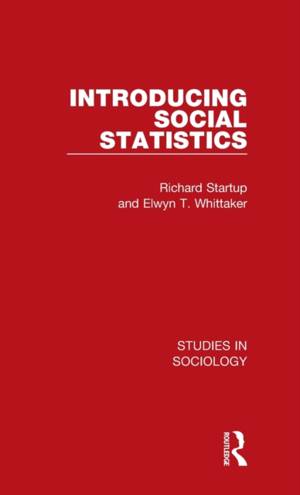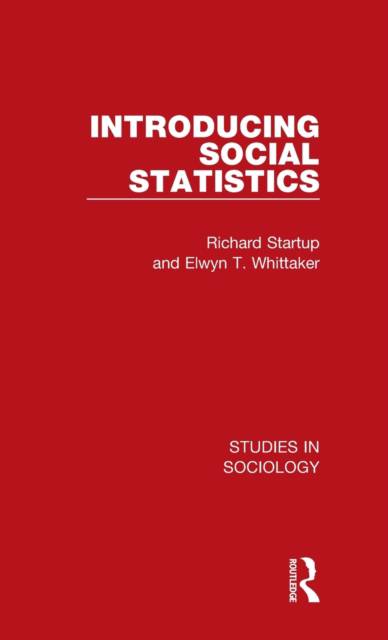
- Retrait gratuit dans votre magasin Club
- 7.000.000 titres dans notre catalogue
- Payer en toute sécurité
- Toujours un magasin près de chez vous
- Retrait gratuit dans votre magasin Club
- 7.000.0000 titres dans notre catalogue
- Payer en toute sécurité
- Toujours un magasin près de chez vous
Description
Originally published in 1982, this book describes those basic ideas and techniques of statistics which should be known to every social scientist. The explanations are given in careful detail at a level of mathematical sophistication which will be readily attainable by students meeting statistical methods for the first time.
All the methods described are applied to, and sometimes are motivated by, genuine problems of interest arising in sociology, social policy, politics or human geography. The authors often provide a meaningful discussion of the substantive problem itself in addition to an analysis of the statistical techniques being used on it. In this way subject matter and statistical techniques are integrated in an original and effective manner.
The authors combine considerable experience of shared teaching of social statistics with familiarity with its use in practical fields and in research. Their book therefore focuses on the most directly applicable methods and is carefully sequenced to promote rapid student understanding. The topic of probability - which so often confuses students - is here dealt with simply yet thoroughly. The chapter on the sources of social statistics, whilst being unusual in a text of this kind, is particularly welcome and comprehensively meets the needs of students on a wide range of courses. Introducing Social Statistics will make the vitally important field of statistics accessible to all students of the social sciences.
Spécifications
Parties prenantes
- Auteur(s) :
- Editeur:
Contenu
- Nombre de pages :
- 212
- Langue:
- Anglais
- Collection :
- Tome:
- n° 9
Caractéristiques
- EAN:
- 9781032081182
- Date de parution :
- 18-10-21
- Format:
- Livre relié
- Format numérique:
- Genaaid
- Dimensions :
- 140 mm x 216 mm
- Poids :
- 394 g

Les avis
Nous publions uniquement les avis qui respectent les conditions requises. Consultez nos conditions pour les avis.






